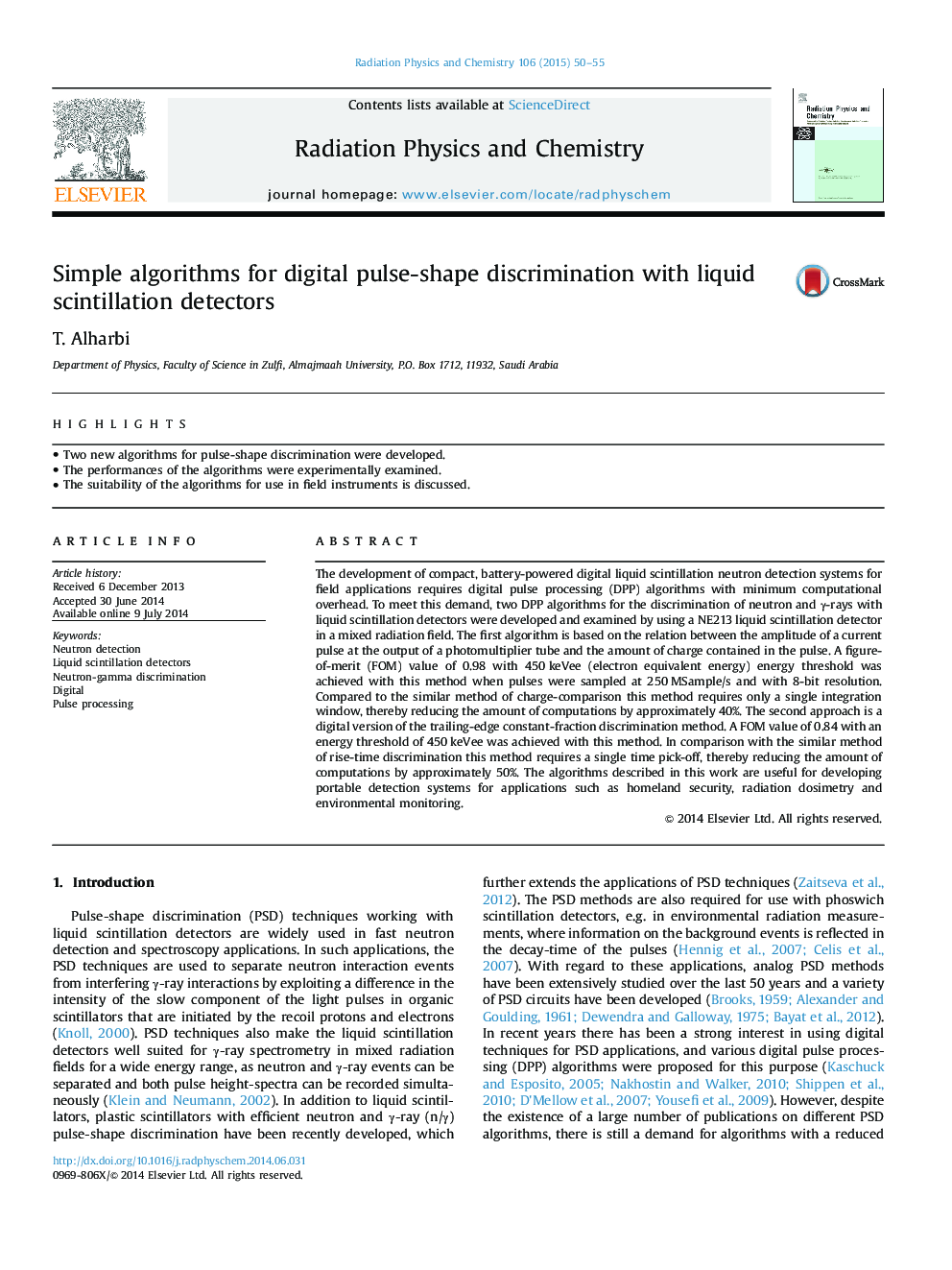| Article ID | Journal | Published Year | Pages | File Type |
|---|---|---|---|---|
| 1885954 | Radiation Physics and Chemistry | 2015 | 6 Pages |
•Two new algorithms for pulse-shape discrimination were developed.•The performances of the algorithms were experimentally examined.•The suitability of the algorithms for use in field instruments is discussed.
The development of compact, battery-powered digital liquid scintillation neutron detection systems for field applications requires digital pulse processing (DPP) algorithms with minimum computational overhead. To meet this demand, two DPP algorithms for the discrimination of neutron and γ-rays with liquid scintillation detectors were developed and examined by using a NE213 liquid scintillation detector in a mixed radiation field. The first algorithm is based on the relation between the amplitude of a current pulse at the output of a photomultiplier tube and the amount of charge contained in the pulse. A figure-of-merit (FOM) value of 0.98 with 450 keVee (electron equivalent energy) energy threshold was achieved with this method when pulses were sampled at 250 MSample/s and with 8-bit resolution. Compared to the similar method of charge-comparison this method requires only a single integration window, thereby reducing the amount of computations by approximately 40%. The second approach is a digital version of the trailing-edge constant-fraction discrimination method. A FOM value of 0.84 with an energy threshold of 450 keVee was achieved with this method. In comparison with the similar method of rise-time discrimination this method requires a single time pick-off, thereby reducing the amount of computations by approximately 50%. The algorithms described in this work are useful for developing portable detection systems for applications such as homeland security, radiation dosimetry and environmental monitoring.
